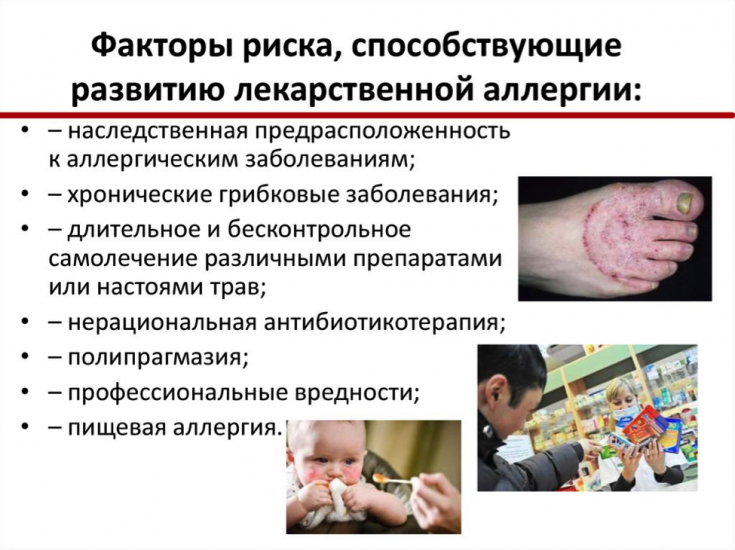It has been established that allergic dermatoses belong to the group of multifactorial diseases with a tendency to severe chronic course with frequent relapses and resistance to treatment. The main reasons for the rapid growth in the number of allergic diseases, modern researchers call the consequences of anthropogenic pollution of the environment; the use of highly allergenic plant and animal foods, as well as self-medication, against which patients create an additional load on the liver, which reduces its functionality for the transformation of synthetic drugs and additional "allergization"; patient.
Learn in the article on estet-portal.com about the main causes, as well as the tactics of a cosmetologist in the event of an allergic reaction during procedures.
- true and symptomatic allergic reactions
- induced development of an allergic reaction
- nature of the allergen and mechanisms of allergic reactions
True and symptomatic allergic reactions
An allergic reaction is understood as manifestations of increased sensitivity of the body's immune system to an allergen (antigen) upon repeated contact with it.
Follow us on Instagram!
This is clinically manifested by damage primarily to those tissues of the body through which the allergen penetrates: the mucous membrane of the bronchi, alimentary canal, nasal cavity, skin.
Read also: Does allergies occur after using hyaluronic acid: causes of trouble
It is important to remember that in addition to a true allergic reaction, its manifestations can be symptoms of an infectious lesion of the body. The antigens of some microorganisms and intestinal parasites have an adjuvant effect on IgE-dependent immune responses, and their toxins contribute to the hyperproduction of IgE and increase the readiness of the patient's body for a hyperergic reaction to the antigenic load.
Read also: Disinfection in medicine: what a cosmetologist needs to remember
Considering the above, the study of the mechanism of action of infectious agents, including Giardia, on the course of allergic skin diseases is very relevant. In this case, the patient has an increased amount of Ig-E in the blood, as with a true allergy. Therefore, if a patient comes to a dermatologist or allergist who has begun to be bothered by itching and urticaria, he does not have a family history and has not previously experienced such symptoms, it is necessary to conduct a thorough survey for the presence of additional symptoms that can confirm the presence of an infectious process or be a manifestation of pseudo-allergy, which is associated with the use of certain substances-histaminoliberators.
Induced development of an allergic reaction
Uncontrolled intake of drugs (antibiotics, sulfonamides, non-steroidal anti-inflammatory drugs, opiates, vitamins) may induce urticaria, and some medications for external use (neomycin sulfate, local anesthetics, antiseptics, etc.) can cause allergic contact dermatitis.

Therefore, before carrying out any cosmetic procedures, the doctor must take an anamnesis for the presence of chronic diseases and the possible use of drugs in connection with this, which, with prolonged use, can increase "allergic readiness"; organism.
Read also: Vascular anatomy of the lips for a beautician
In addition, recent studies indicate a significant role in the development of allergic skin reactions of viruses (herpes simplex, Epstein-Barr, cytomegalovirus, hepatitis B and C, etc.), bacteria (streptococcus, Helicobacter, Pseudomonas, Mycoplasmas), parasitic invasions (helminths and protozoa, in particular Giardia).
The nature of the allergen and the mechanisms of allergic reactions
Allergens can be substances of various origins: from simple compounds to complex protein and protein-polysaccharide complexes of non-infectious nature (pollen, food, epidermal, insect, medicinal and industrial) and infectious nature (allergens of bacteria, viruses , fungi, helminths and protozoa).
Follow our news on Facebook!
If a patient in the dermatologist's office reports a history of an allergic reaction, it should be clarified if the patient has been screened for a cross-reaction as many herbal ingredients found in cosmetic products can cause the release of histamine by the mechanism of the immune response to allergenic molecules similar in structure and function.
The most unusual cross-reaction is peanut and natural latex allergy, as they contain almost identical amino acids.
The body's immune system implements humoral and cellular reactions as protective ones aimed at maintaining homeostasis, which in some cases can provoke damage to its own cells and tissues. Such reactions are called hypersensitivity reactions, and according to the rate of development they are divided into immediate-type reactions and delayed-type reactions, according to the mechanism of development - IgE-mediated and IgE-non-mediated. The classification proposed in 1975 by P.Gell and R.Coombs remains valid, according to which 4 types of hypersensitivity are distinguished.

Allergic urticaria and Quincke's edema develop in an IgE-mediated, or reaginic, type. Symptoms of anaphylactic shock — it is cold, pale skin, collapsed saphenous veins, hypotension, tachycardia, oliguria or anuria, involuntary stools and loss of consciousness. Therefore, with the development of a hypersensitivity reaction of the first type, the cosmetologist should call an ambulance and provide emergency medical assistance.
Read also: Granulomas after fillers: what a beautician should do
Required: Assess airway patency, respiration, circulation, and consciousness, administer epinephrine (inject 0.3 mg: auto-injector, or 0.3 mg or 0.5 mg pen into lateral thigh (solution 1 mg/ ml, 0.1%, 1:1000), put the patient on his back with legs raised.
Read also: Perioral dermatitis or "stewardess disease" combined treatment
According to type IV (delayed hypersensitivity), contact dermatitis develops. This is a chronic allergic disease. Therefore, if redness and itching appear on the topical use of cosmetic products, the cosmetologist may use local preparations containing glucocorticosteroids or consider the advisability of introducing H2-blockers (loratadine, edem, erius).
More useful information on our YouTube-channel:







Add a comment